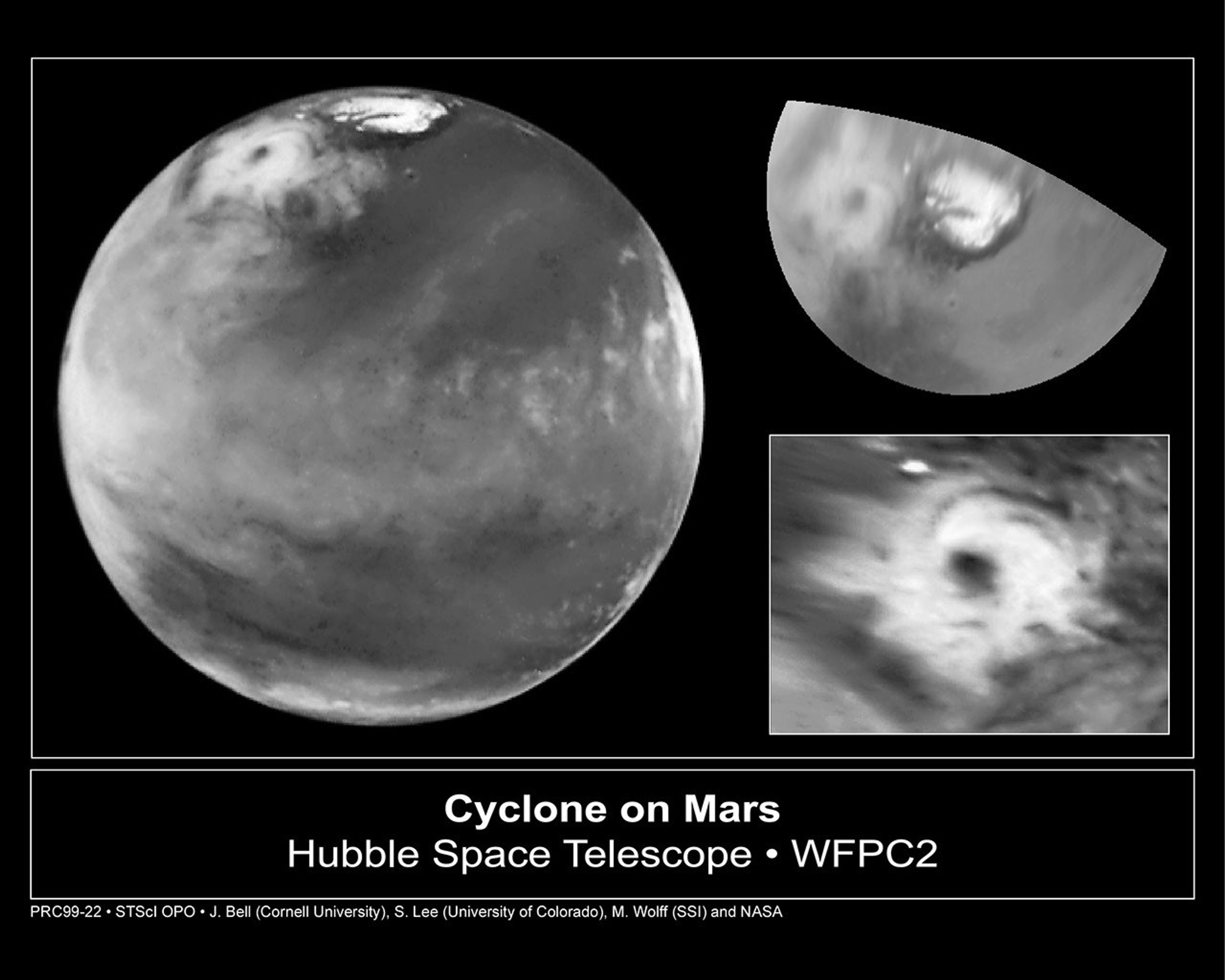1 min read
Mars

Here is the discovery image of the Martian polar storm as seen in blue light (410 nm). The storm is located near 65 deg. N latitude and 85 deg. W longitude, and is more than 1000 miles (1600 km) across. The residual north polar water ice cap is at the top of the image. A belt of clouds like that seen in previous telescopic observations during this Martian season can also be seen in the planet's equatorial regions and northern mid-latitudes, as well as in the southern polar regions. The volcano Ascraeus Mons can be seen as a dark spot poking above the cloud deck near the western (morning) limb. This extinct volcano towers nearly 16 miles (25 km) above the surrounding plains and is about 250 miles (400 km) across.
- Object NameObject NameA name or catalog number that astronomers use to identify an astronomical object.Mars
- Release DateMay 19, 1999
- Science ReleaseColossal Cyclone Swirls near Martian North Pole
- CreditScience Release Credit: Jim Bell (Cornell U.), Steve Lee (U. Colorado), Mike Wolff (SSI), and NASA
Related Images & Videos

Colossal Polar Cyclone on Mars
[left]: The discovery image of the Martian polar storm as seen in blue light (410 nm). The storm is located near 65 deg. N latitude and 85 deg. W longitude, and is more than 1000 miles (1600 km) across. The residual north polar water ice cap is at top. A belt of clouds like that...

Martian Cyclone, Seen From the North Polar Region
This is a color polar view of the north polar region, showing the location of the storm relative to the classical bright and dark features in this area. The color composite data (410, 502, and 673 nm) indicate that the storm is fairly dust-free and therefore likely composed...
Share
Details
Last Updated
Aug 17, 2025
Contact
Media
Claire Andreoli
NASA’s Goddard Space Flight Center
Greenbelt, Maryland
claire.andreoli@nasa.gov





























